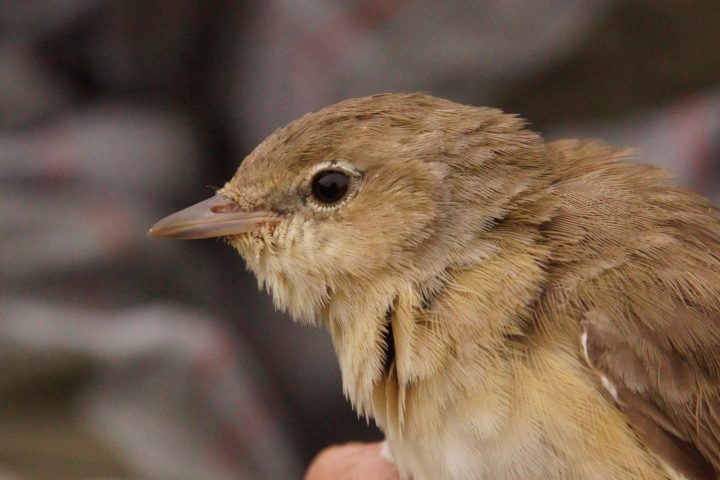To say that this year’s mad summer has played havoc with bird ringing (especially at Howick) would be an understatement but first I will bring us up to date on what’s been happening with the Barn Owls:
Returning to one box near Netherwitton on the 5th we found 3 healthy owlets that were duly ringed by a new trainee; the Female was with them and we confirmed from her ring that she had been hatched back in May 2014 nearer Morpeth. This is the location where we had been forced (by its poor condition) to install a replacement box back on the 28/6/19; neither the owlets nor the adult seem to have been any the worse for the experience! Near Warkworth on the 13th we ringed a brood of 4 in a reliable location (that was unusually late this year). On the same day we also returned to a box near the old railway line that had 5 eggs laid in June. Here the female was only one year old (ringed near Howick on the 16/6/18) and she had only 1 owlet alive for us to ring on this our return visit. The sad thing was another dead (but quite well grown) owlet found in the box.
After ringing at Howick on the 2nd I decided to check on a couple of usually reliable locations that had not had nesting owls earlier in the year. To our pleasant surprise one (in a farm near the coast) revealed 2 owlets for us to ring along with our resident female from Dumfries (ringed in May 2011); who had been unable to nest earlier in the year in her usual site due to Jackdaws. In the other location near Craster we found a female with 5 eggs; a second brood for this pair that had already raised 3 owlets nearer Howick in June. We shall not return to see if this is successful until the end of September.
Despite the weather we managed a session on the 2nd August at Howick and captured 8 retraps and 19 new birds; the most interesting of which was a Garden Warbler. This proved to be an adult female with a beautiful reddish eye (unfortunately not easy to see in the attached photo.); these lovely birds migrate across the Sahara to Senegal and The Gambia in the Autumn. We also captured 5 Blackcaps (Sylvia warbler relatives of the Garden Warbler) that will stop short of the Sahara, to winter around the Mediterranean. These were all juvenile birds intent on fattening up on berries in the Howick Arboretum. There were also 3 very juvenile Chiffchaffs (probably hatched near Howick) that will need to fatten up before they migrate to Senegal. Lastly, we also captured a very noisy juvenile Great Spotted Woodpecker; just starting to show a few red feathers on the back of the neck indicating that he was a male.
Returning on the 3rd we managed 3 retraps and 23 new birds (before rain stopped play). These included 7 juvenile Blackcaps and another Garden Warbler; this time a juvenile with a characteristically dull grey eye and sparser feathering (see pict.). There were also a couple of juvenile Chiffchaffs and 3 beautiful young Willow Warblers (still juvenile but older than their cousins the chiffchaffs). These are probably birds already on migration to the Ivory Coast and Ghana; having already travelled from further north (see pict.)
We were next able to ring at Howick on the 17th when we recaptured 5 birds and 15 new ones; including 2 Chiffchaff, a Blackcap and a Bullfinch.
On the 18th I went to help with the CES (Constant Effort Ringing Site) at Gosforth Park Nature Reserve. This is were I originally did my training and I was able to handle some Reed Warblers and Sedge Warblers that we don’t see at Howick. It was particularly pleasing to see a Sedge Warbler that used to be very common in the reedbed but whose numbers I now much reduced (See pict.). These birds have to put on a lot of fat reserves before migrating to West Africa.
I was asked to put on a Ringing Demonstration at Embleton Quarry on the 24th as part of the Embleton Bioblitz event. This netted 22 birds including 4 Willow Warbler, 3 Blackcap and 6 Chiffchaff (one of which was an adult bird). Several people seemed very interested and some are contemplating taking up ringing.
We are now regularly ringing at the Howick Ringing Station on Friday and Saturday mornings when weather permits. We are usually on site, based on the edge of the Car Park, from 7:00 until lunchtime. If interested in ringing please get in touch.
Phil Hanmer ‘A’ Ringer/Trainer; Natural History Society of Northumbria Ringing Group (Hancock Museum).
E-mail: tytoalbas@btinternet.com
